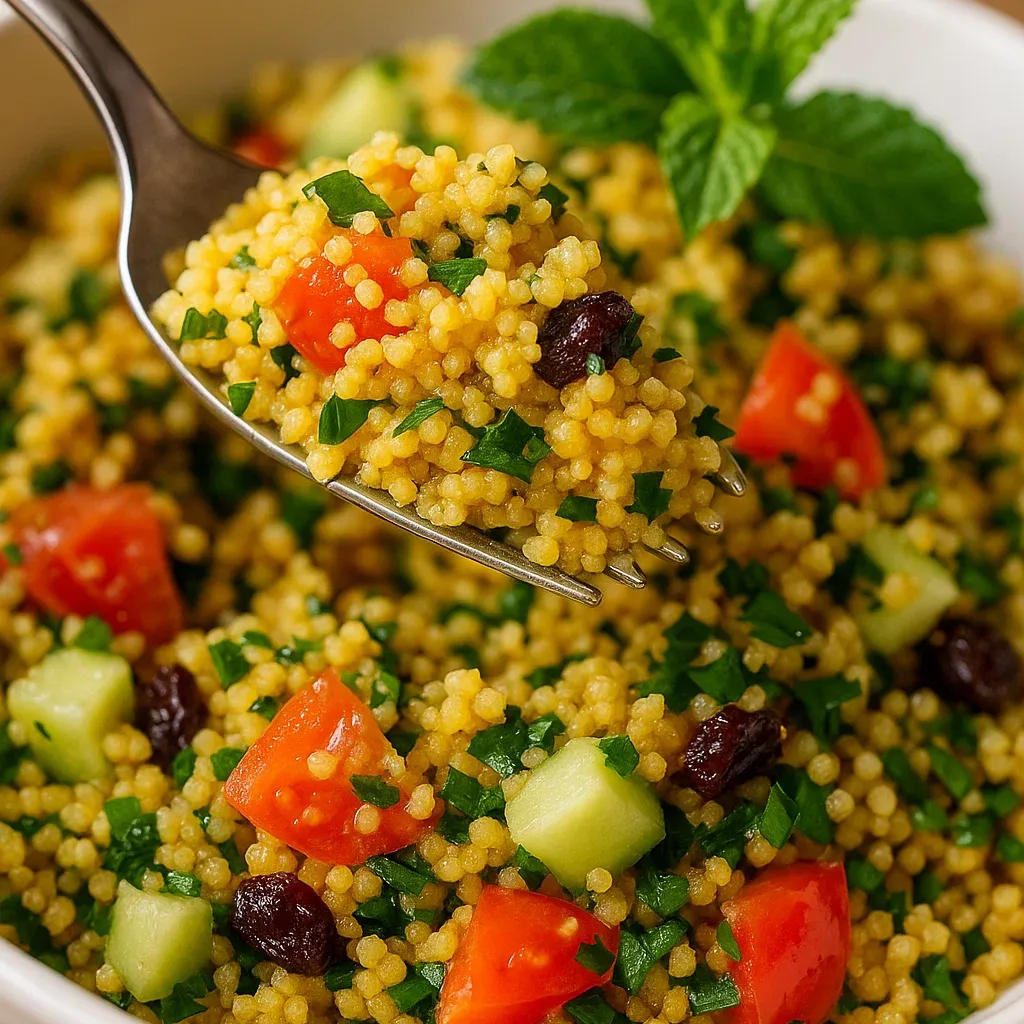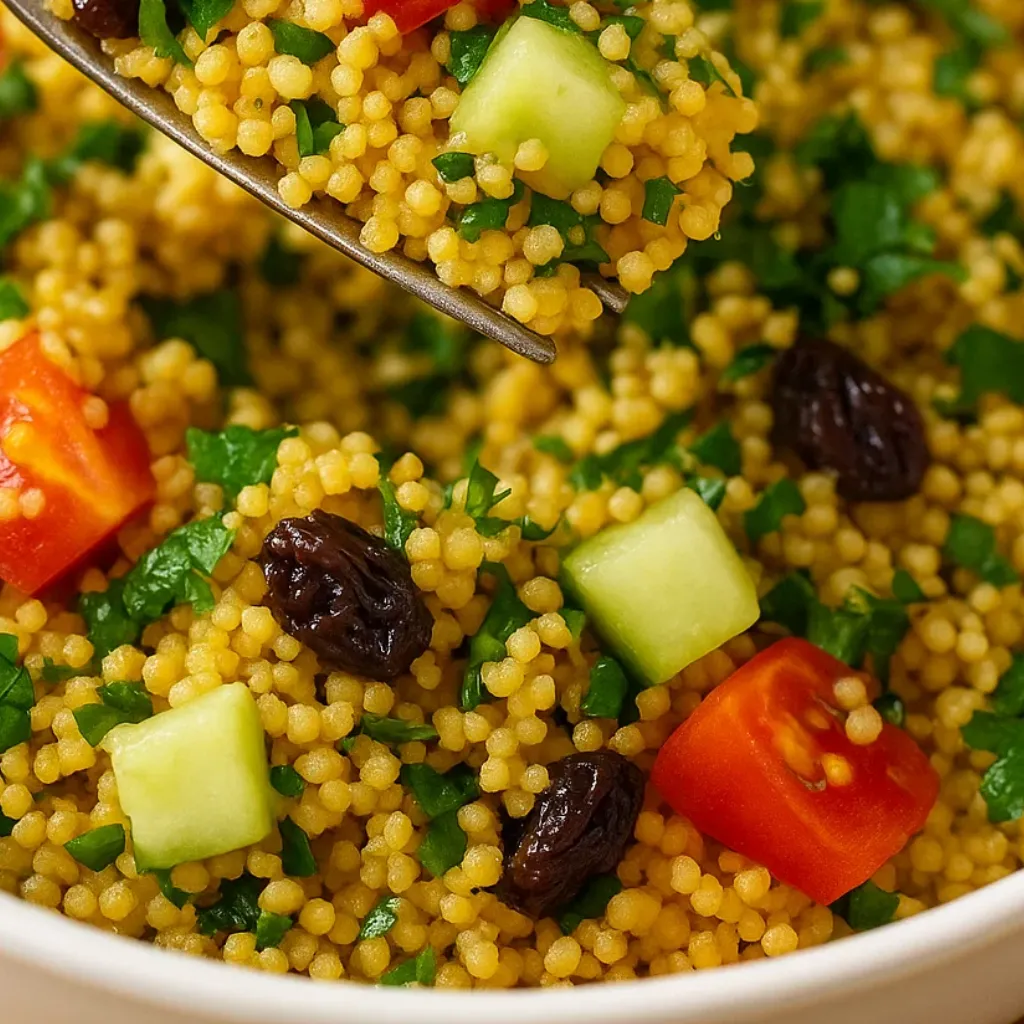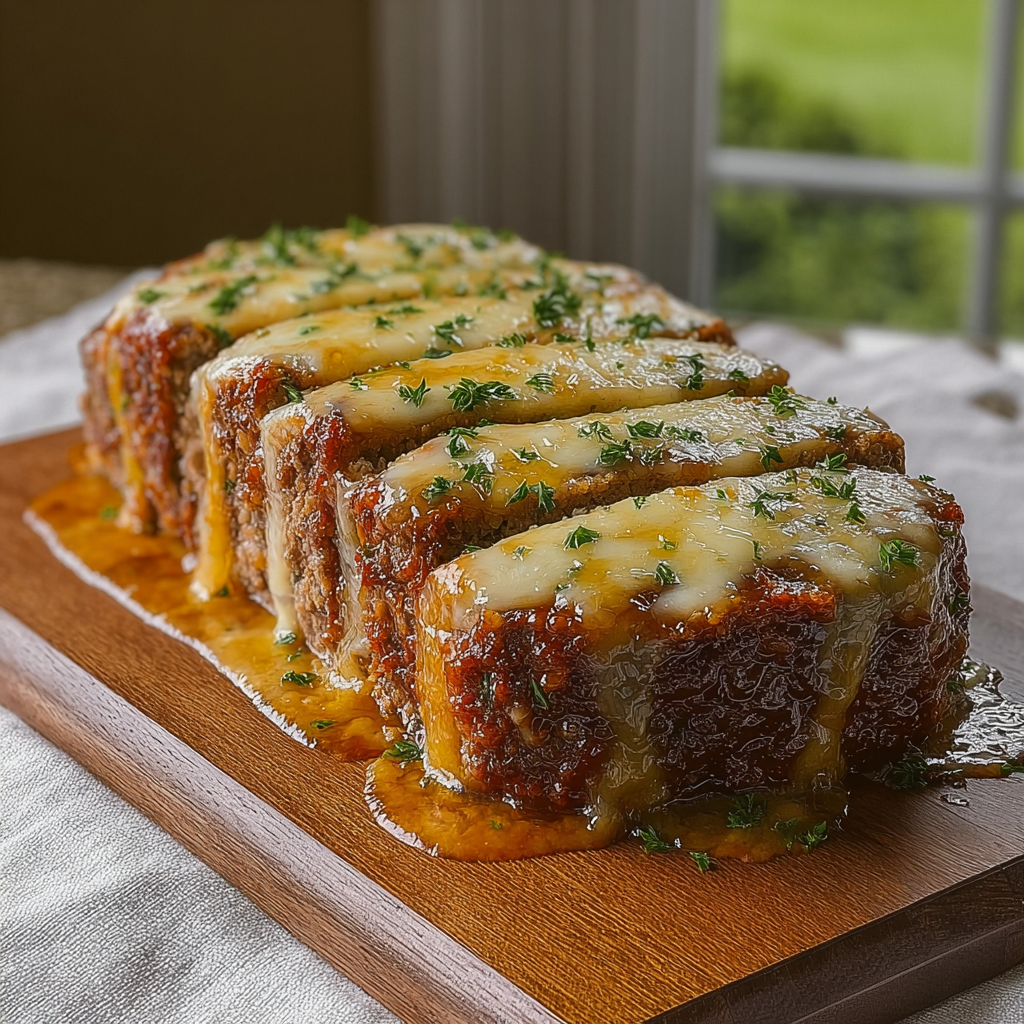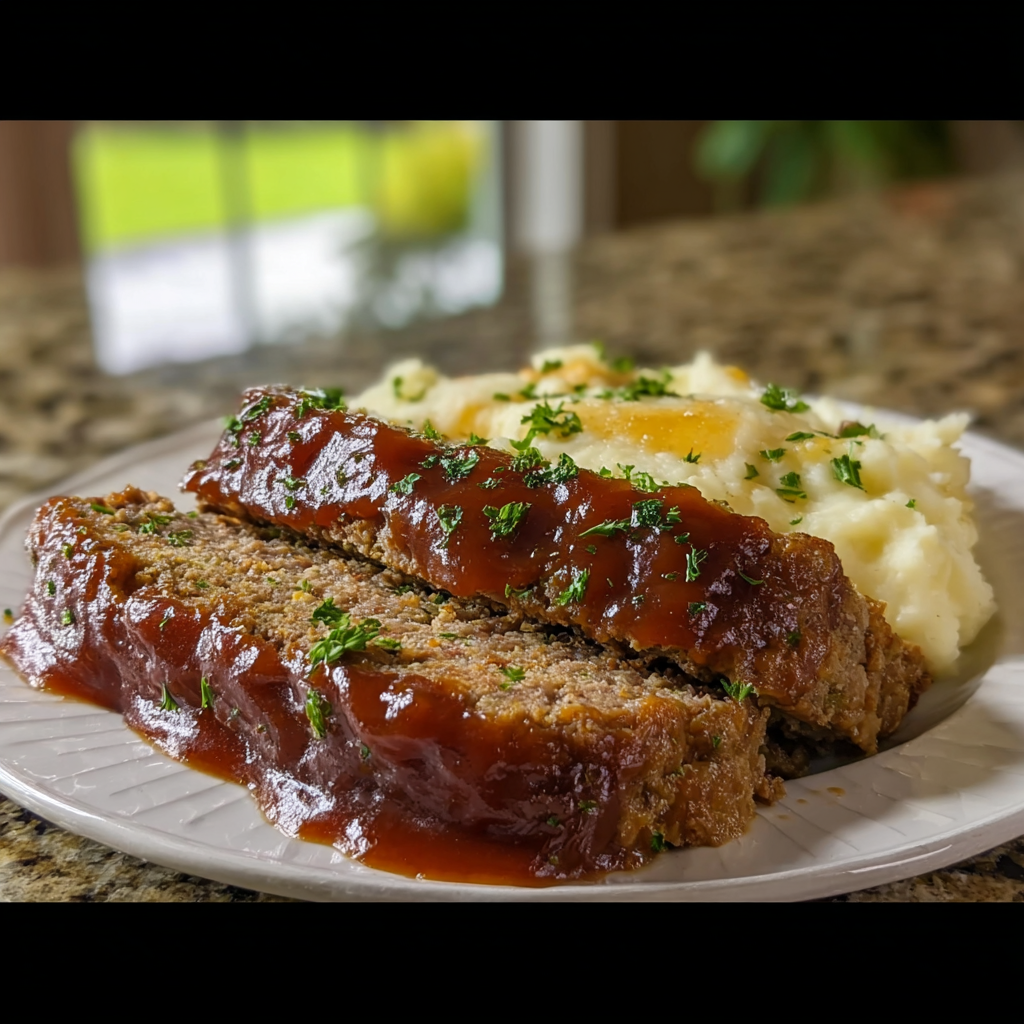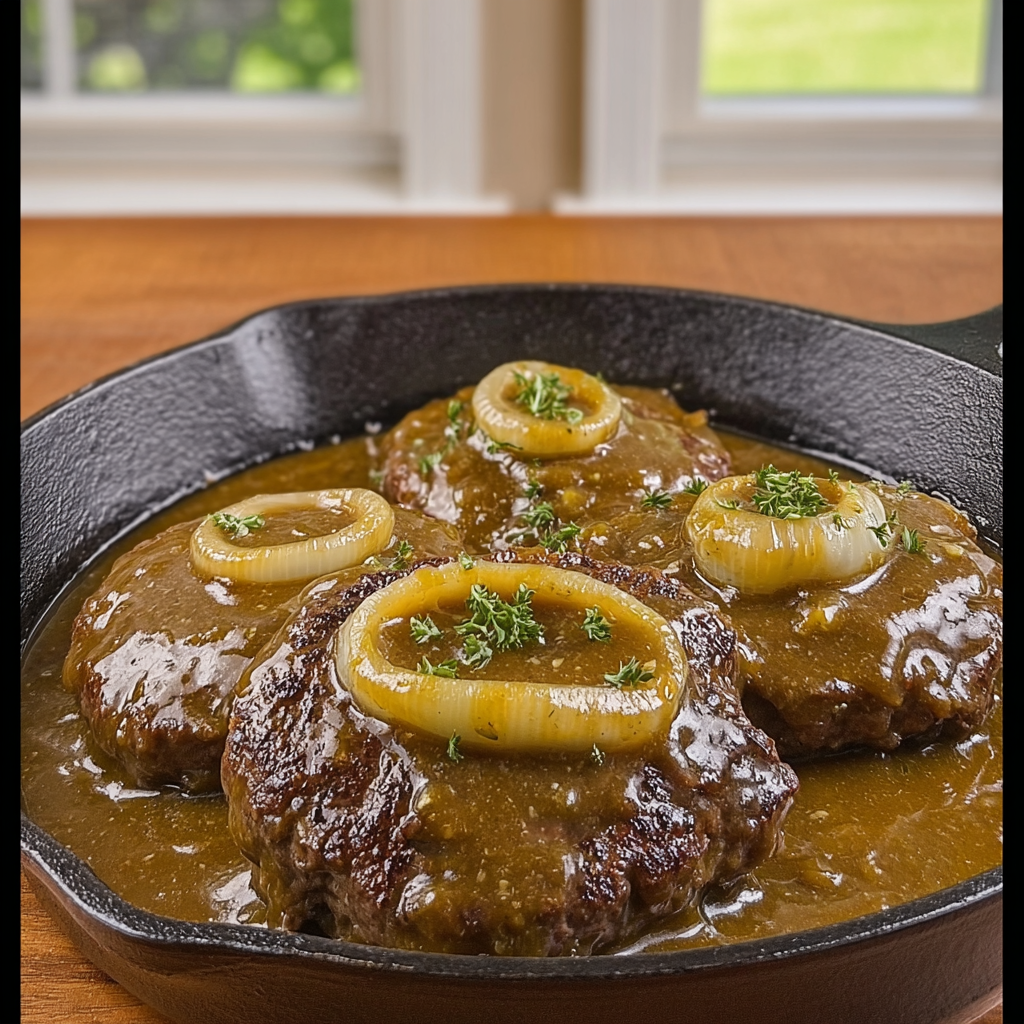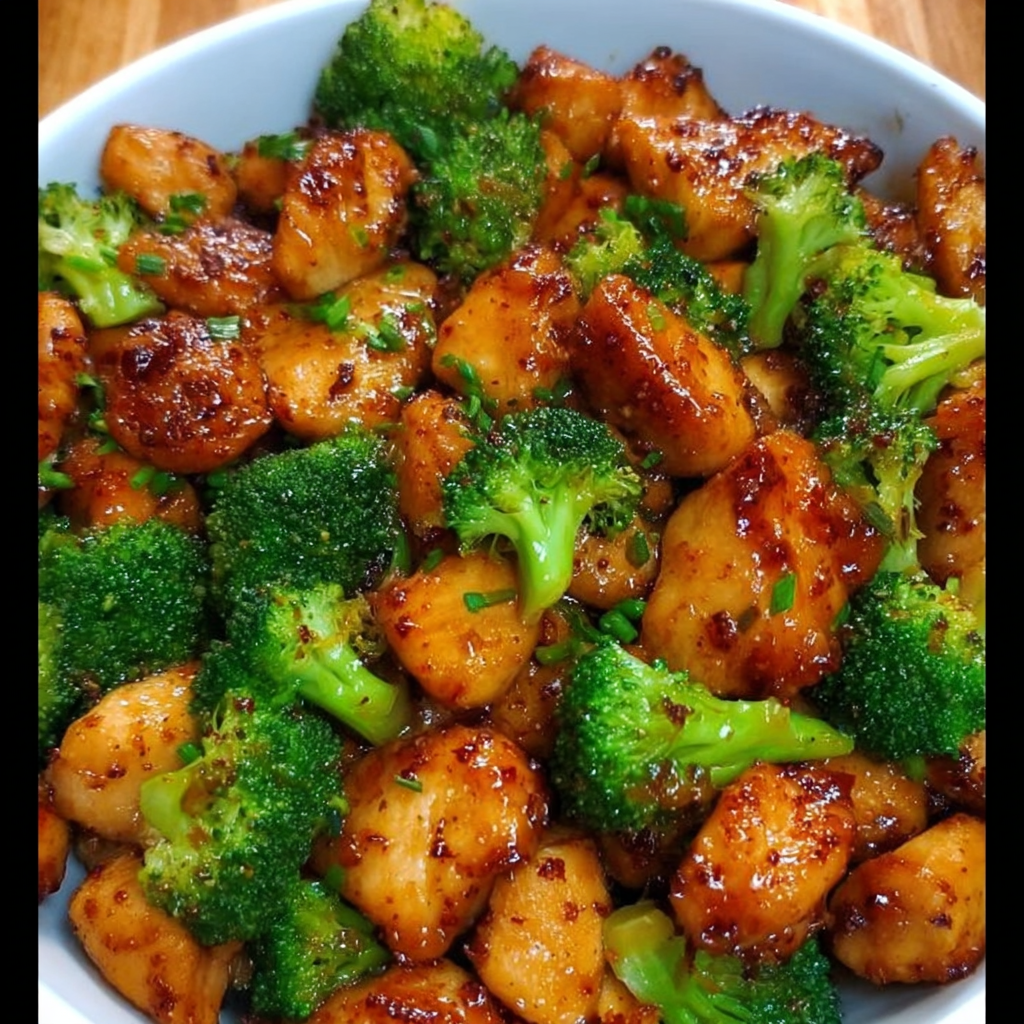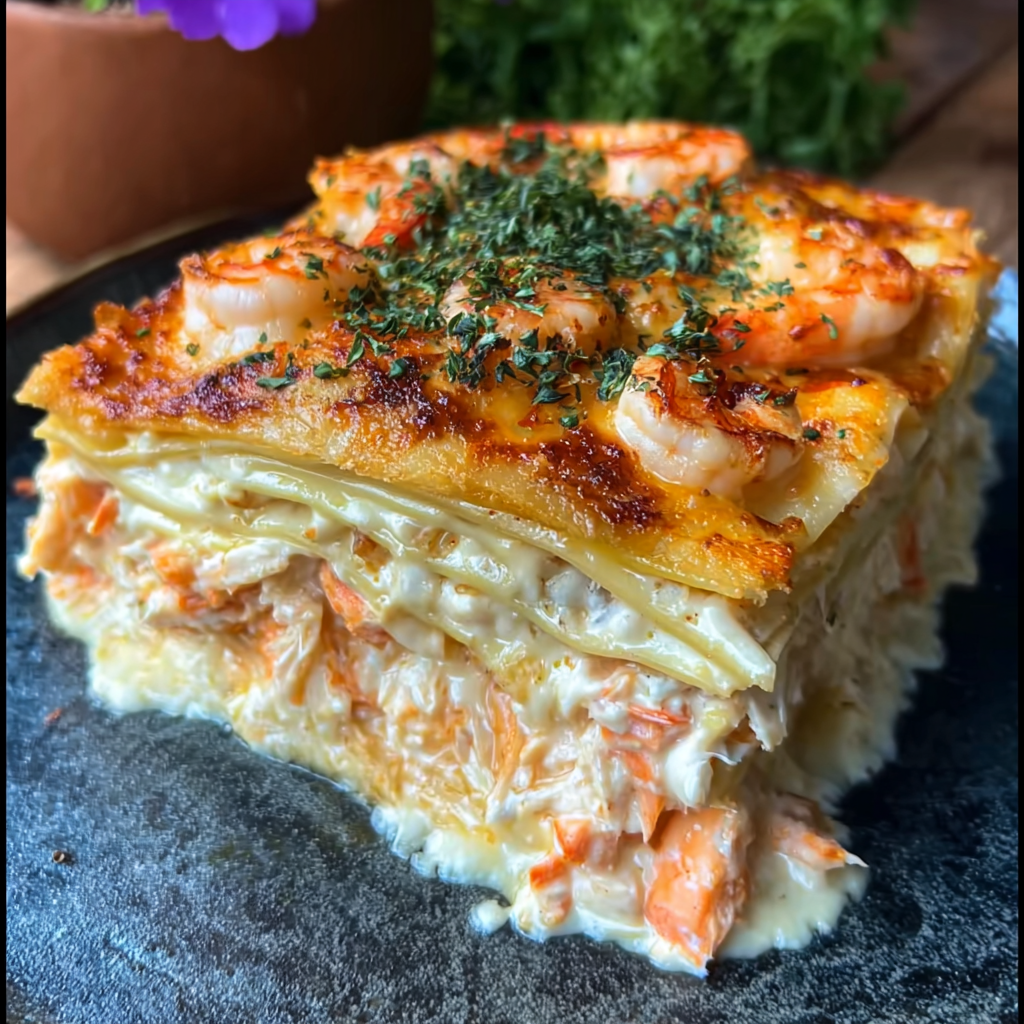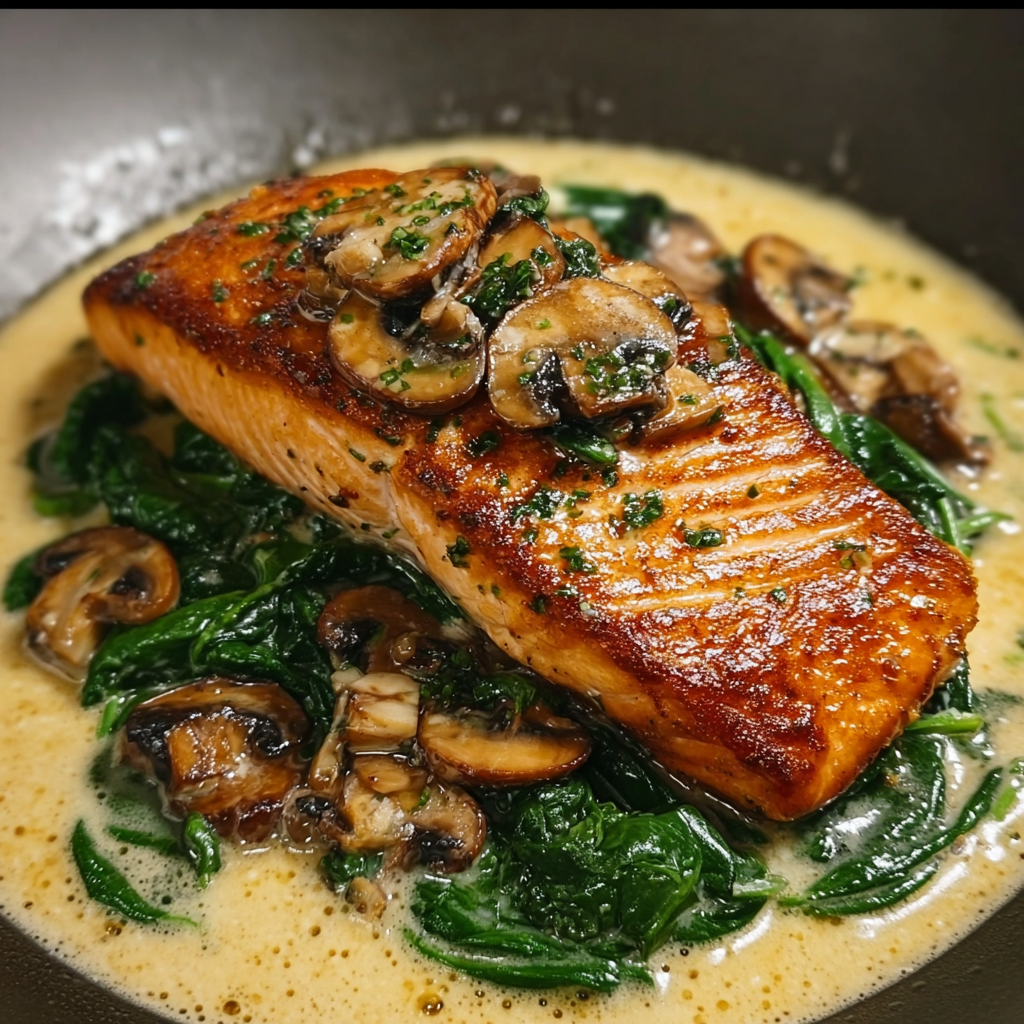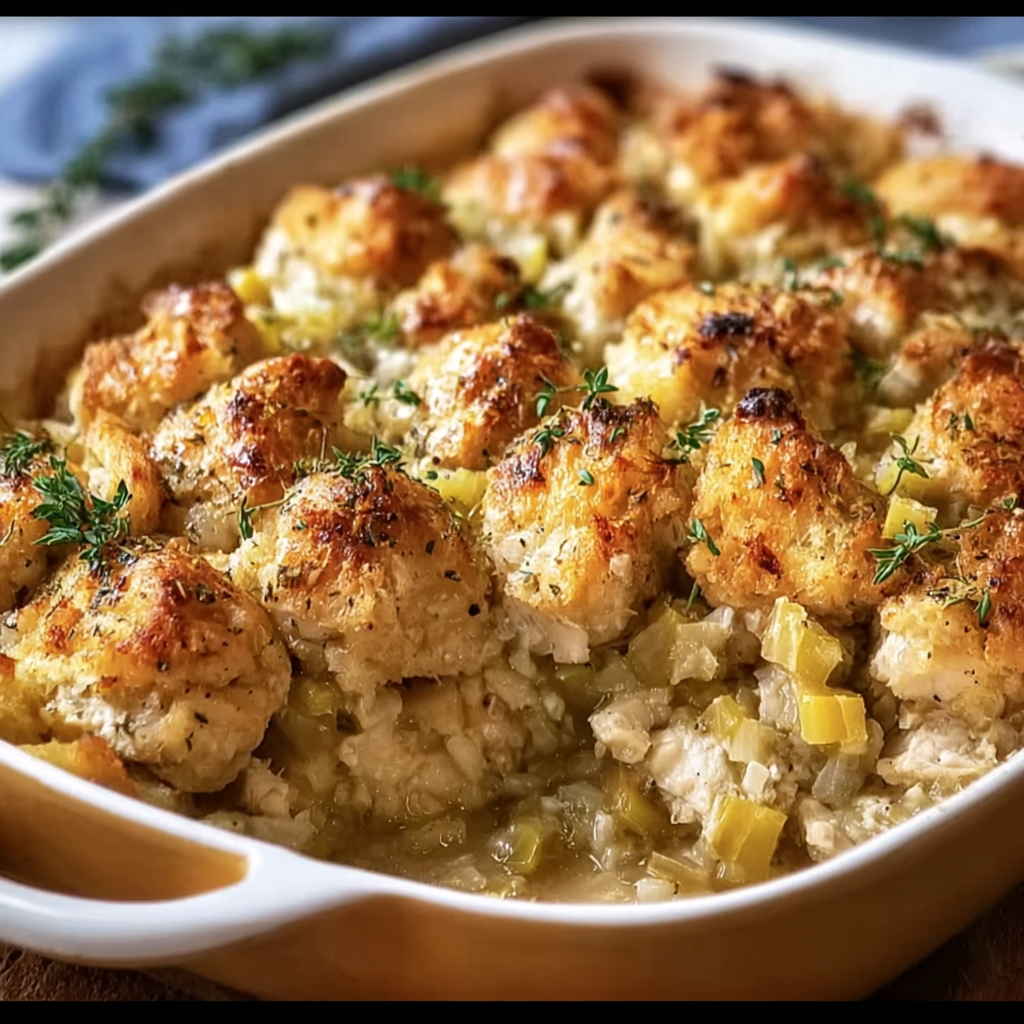Prep Time: 20 minutes | Rest Time: 15 minutes | Total Time: 35 minutes | Serves: 6-8
Why This Couscous Tabbouleh Will Transform Your Salad Game
There’s something absolutely magical about a salad that manages to be both incredibly refreshing and deeply satisfying at the same time. This couscous tabbouleh achieves that perfect balance, combining the light, fluffy texture of perfectly prepared couscous with an abundance of fresh herbs, crisp vegetables, and the bright zing of lemon that makes every bite a celebration of Mediterranean flavors.
What makes this couscous tabbouleh so special is how it reimagines the traditional Lebanese tabbouleh while maintaining all the elements that make the original so beloved. Instead of bulgur wheat, we use quick-cooking couscous that absorbs flavors beautifully while providing a lighter, more delicate base for all those gorgeous fresh ingredients. The result is a couscous tabbouleh that’s both familiar and refreshingly modern.
I first fell in love with this couscous tabbouleh during a particularly hot summer when I was craving something cool, fresh, and substantial enough to serve as a light lunch. Traditional tabbouleh was delicious, but I wanted something that came together more quickly while still delivering that incredible burst of herb-forward flavor. This couscous tabbouleh became my solution – and quickly became a weekly staple in our house.
The beauty of couscous tabbouleh lies in its incredible versatility and make-ahead friendliness. It’s elegant enough for dinner parties, casual enough for weekday lunches, and substantial enough to serve as a light vegetarian main course. Plus, this couscous tabbouleh actually improves with time, making it perfect for meal prep and entertaining.
Ingredients
For the Couscous Base:
- 1½ cups Moroccan couscous (the small, quick-cooking variety)
- ½ teaspoon ground turmeric (for gorgeous golden color)
- 1 teaspoon kosher salt, plus more to taste
- 1¾ cups boiling water or vegetable broth
- 3 tablespoons extra virgin olive oil, divided
For the Fresh Vegetable Mix:
- 3 large ripe tomatoes, seeded and finely diced
- 2 Persian or English cucumbers, finely diced
- 1 small red onion, very finely minced
- 1 cup fresh flat-leaf parsley, finely chopped
- ½ cup fresh mint leaves, finely chopped
- ⅓ cup golden raisins (optional, for natural sweetness)
For the Bright Dressing:
- ¼ cup fresh lemon juice (from 2-3 lemons)
- 2 tablespoons extra virgin olive oil
- ½ teaspoon freshly ground black pepper
- Additional salt to taste
For Serving:
- Fresh herb sprigs for garnish
- Lemon wedges
- Extra olive oil for drizzling
The Art of Perfect Couscous Tabbouleh: Understanding Your Ingredients
Mastering the Couscous Foundation
The secret to exceptional couscous tabbouleh starts with properly preparing the couscous base. Moroccan couscous, with its tiny granules, creates the ideal texture for this salad – light and fluffy rather than dense or gummy. The key is using the right liquid-to-couscous ratio and allowing proper steaming time for perfect texture in your couscous-tabbouleh.
Turmeric in couscous-tabbouleh serves a dual purpose: it adds a gorgeous golden color that makes the finished salad visually stunning, while contributing a subtle earthy warmth that complements the fresh herbs beautifully. The amount used is gentle enough not to overwhelm the delicate flavors while providing that signature Mediterranean appearance.
Using vegetable broth instead of water elevates your couscous tabbouleh significantly, adding an extra layer of savory depth that makes the grain component more interesting. However, if you only have water available, don’t worry – the abundance of fresh ingredients will still create incredible flavor.
Selecting and Preparing Fresh Herbs
Fresh herbs are absolutely crucial to authentic couscous-tabbouleh – they’re not just an addition, they’re the star of the show. Flat-leaf parsley provides that classic tabbouleh flavor and gorgeous green color, while fresh mint adds brightness and aromatic complexity that elevates the entire dish.
When preparing herbs for couscous-tabbouleh, take time to chop them properly. Remove thick stems and chop the leaves as finely as possible – this distributes flavor more evenly and creates better texture in every bite. The traditional rule for tabbouleh is that you should have more herbs than grain, and this couscous tabbouleh follows that principle.
Quality matters enormously with fresh herbs. Look for bright, perky leaves without wilting or dark spots. Fresh, vibrant herbs make the difference between good and extraordinary couscous tabbouleh.
Step-by-Step Instructions for Couscous Tabbouleh Perfection
Step 1: Create the Perfect Couscous Base
Place the couscous in a large mixing bowl and sprinkle the turmeric and salt evenly over the grains. This ensures even distribution of seasoning throughout your couscous-tabbouleh. Pour the boiling water or broth slowly over the couscous while stirring gently with a fork to prevent clumping.
Cover the bowl tightly with plastic wrap or a clean kitchen towel and let the couscous steam for exactly 5 minutes. This steaming process is crucial for achieving the light, fluffy texture that makes couscous tabbouleh so appealing. Don’t lift the cover during this time – the trapped steam is doing important work.
After steaming, remove the cover and fluff the couscous gently with a fork, breaking up any clumps. The grains should be tender and separate, not mushy or sticky. If the couscous seems dry, add a tablespoon of hot water and fluff again.
Step 2: Cool and Season the Couscous
Drizzle 2 tablespoons of olive oil over the warm, fluffed couscous and toss gently with a fork. This oil coating prevents the grains from sticking together and adds richness that enhances the overall flavor of your couscous tabbouleh.
Allow the couscous to cool completely to room temperature before adding the fresh ingredients. This prevents the herbs from wilting and the vegetables from becoming soggy in your finished couscous tabbouleh. The cooling time is perfect for preparing your fresh ingredients.
Taste the cooled couscous and adjust seasoning if needed. It should be well-seasoned on its own, providing a flavorful foundation for all the fresh additions in your couscous-tabbouleh.
Step 3: Prepare the Fresh Vegetable Components
While your couscous cools, prepare the fresh vegetables that give couscous-tabbouleh its incredible texture and flavor. Start by seeding and dicing the tomatoes into small, uniform pieces. Removing the seeds prevents excess moisture from making your couscous-tabbouleh watery.
Dice the cucumbers into pieces roughly the same size as your tomatoes for consistent texture throughout your couscous tabbouleh. Persian or English cucumbers work best because they have fewer seeds and thinner skins that don’t need peeling.
Mince the red onion as finely as possible – you want flavor distribution without overwhelming onion chunks in your couscous-tabbouleh. If your onion seems particularly sharp, you can mellow it by soaking the minced pieces in cold water for 10 minutes, then draining and patting dry.
Step 4: Master the Herb Preparation
Wash and thoroughly dry your fresh parsley and mint – any excess water will dilute the flavors in your couscous-tabbouleh. Remove the thicker stems from the parsley, keeping only the leaves and tender stems.
Chop the parsley as finely as you can manage – traditional tabbouleh features very finely minced herbs, and this couscous-tabbouleh follows that principle. The finer the chop, the better the herbs distribute throughout the salad and the more vibrant the final flavor.
For the mint, remove the leaves from stems and chop them finely as well. Mint can bruise easily, so use a sharp knife and work quickly to preserve the bright flavor that makes couscous-tabbouleh so refreshing.
Step 5: Combine and Create the Perfect Balance
Add all the prepared vegetables and herbs to your cooled couscous. Include the golden raisins at this stage if you’re using them – they add lovely bursts of natural sweetness that complement the bright acidity in couscous tabbouleh.
Drizzle the fresh lemon juice and remaining olive oil over the mixture. Start with the measurements given, but remember that couscous tabbouleh should be bright and well-dressed. The lemon juice is particularly important – it awakens all the flavors and gives the salad its characteristic Mediterranean zing.
Season with freshly ground black pepper and additional salt to taste. Toss everything together gently but thoroughly, ensuring every component is evenly distributed throughout your couscous tabbouleh.
Step 6: Perfect the Final Seasoning
Taste your couscous tabbouleh and adjust the seasoning as needed. The flavor should be bright, herbaceous, and well-balanced. If it needs more acidity, add lemon juice. If it seems dry, add more olive oil. If the flavors seem muted, add salt gradually until everything brightens.
The beauty of couscous-tabbouleh is its adaptability – trust your palate and adjust until the salad tastes perfect to you. The seasoning should enhance rather than mask the fresh, vibrant flavors of the herbs and vegetables.
Let your finished couscous tabbouleh rest in the refrigerator for at least 30 minutes before serving. This resting time allows all the flavors to meld together and the couscous to absorb the delicious dressing.
Pro Tips for Couscous Tabbouleh Excellence
Proper Couscous Texture: The key to great couscous-tabbouleh is perfectly cooked couscous. If your couscous turns out mushy, you’ve used too much liquid or over-steamed it. If it’s too dry, add hot liquid gradually while fluffing.
Herb Handling: Keep herbs fresh by storing them properly and chopping them just before using. Wilted herbs will make your couscous-tabbouleh look tired and taste flat.
Acid Balance: Don’t be shy with the lemon juice – couscous tabbouleh should be bright and acidic. The acid not only adds flavor but helps preserve the colors of your fresh ingredients.
Make-Ahead Strategy: couscous-tabbouleh actually improves with time. Make it a day ahead for parties or meal prep – the flavors become more complex and unified.
Creative Variations for Your Couscous Tabbouleh
Protein-Packed Couscous Tabbouleh: Add drained and rinsed chickpeas or white beans to make your couscous tabbouleh a complete meal. The protein addition makes it substantial enough for lunch or light dinner.
Mediterranean Couscous Tabbouleh: Include diced bell peppers, Kalamata olives, and crumbled feta cheese for a Greek-inspired version that’s incredibly satisfying and colorful.
Autumn Couscous Tabbouleh: Replace tomatoes with diced apples and add toasted pine nuts and dried cranberries for a fall version that’s perfect for harvest season entertaining.
Spiced Couscous Tabbouleh: Add ground cinnamon and a pinch of allspice to the couscous while cooking, then include chopped dates and toasted almonds for a North African-inspired variation.
Perfect Pairings: Complete Your Mediterranean Meal
This versatile couscous tabbouleh works beautifully as both a side dish and a light main course. Its fresh, clean flavors complement rich, grilled proteins perfectly while providing a refreshing contrast to heavier dishes.
Explore More Fresh and Vibrant Recipes
Ready to build the perfect Mediterranean-inspired meal around your couscous tabbouleh? Discover these amazing recipe collections:
- Fresh Vibrant Salads – Find more crisp, colorful salads that share the fresh, healthy appeal of couscous tabbouleh
- Perfect Sides – Discover Mediterranean sides like roasted vegetables and grain dishes that complement tabbouleh beautifully
- Flavored Dips & Marinades – Explore hummus, tzatziki, and other Mediterranean dips that pair perfectly with fresh salads
- Hearty Main Dishes – Find grilled proteins and Mediterranean mains that make couscous tabbouleh the perfect side
- Refreshing Beverages – Discover fresh drinks that complement the bright, herbal flavors of tabbouleh
Serving Suggestions for Every Occasion
Serve your couscous tabbouleh as part of a Mediterranean meze spread alongside hummus, falafel, and warm pita bread. The fresh, bright flavors provide perfect contrast to rich, creamy dips and fried foods.
For a light lunch, serve couscous tabbouleh in individual bowls topped with grilled chicken, lamb, or fish. The salad provides a substantial, satisfying base while the protein makes it a complete meal.
This couscous tabbouleh also works beautifully as a side dish for grilled meats, roasted vegetables, or any dish that benefits from fresh, bright accompaniment. The herb-forward flavors cleanse the palate between bites of richer foods.
Storage and Make-Ahead Benefits
One of the greatest advantages of couscous tabbouleh is how well it keeps and how the flavors improve over time. Store your finished salad in an airtight container in the refrigerator for up to 4 days, though it’s at its peak within the first 2-3 days.
The acids in the lemon juice help preserve the fresh flavors and bright colors of your couscous tabbouleh, while the olive oil keeps everything moist and delicious. Before serving leftover couscous tabbouleh, give it a gentle stir and taste for seasoning – you might want to add a squeeze of fresh lemon juice to brighten the flavors.
For meal prep, couscous tabbouleh is virtually perfect. Make a large batch on Sunday and enjoy fresh, healthy lunches all week long. The convenience factor makes this salad invaluable for busy schedules.
The Cultural Heritage of Tabbouleh
While traditional tabbouleh originated in Lebanon and is made primarily with bulgur wheat, this couscous tabbouleh honors the spirit of the original while adapting to modern tastes and ingredients. The essence of tabbouleh – celebrating fresh herbs and vegetables with bright, clean flavors – remains completely intact.
The beauty of couscous tabbouleh lies in how it bridges culinary traditions, combining the herb-forward philosophy of Lebanese cuisine with the grain traditions of North African cooking. This fusion creates something that feels both authentically Mediterranean and refreshingly contemporary.
Understanding this cultural heritage adds depth to your appreciation of couscous tabbouleh and connects you to the generations of cooks who have celebrated fresh, seasonal ingredients in similar ways.
Nutritional Benefits of Couscous Tabbouleh
Beyond its incredible taste, couscous tabbouleh provides substantial nutritional benefits. The abundance of fresh herbs provides antioxidants, vitamins, and minerals, while the vegetables add fiber, vitamins, and hydration. Couscous contributes complex carbohydrates for sustained energy.
The olive oil in couscous tabbouleh provides healthy monounsaturated fats that help your body absorb fat-soluble vitamins from the vegetables and herbs. The lemon juice adds vitamin C and helps enhance iron absorption from the herbs.
This combination makes couscous tabbouleh not just delicious but genuinely nourishing – a salad that satisfies both your taste buds and your body’s nutritional needs.
Troubleshooting Common Issues
Mushy Couscous: This usually results from too much liquid or over-steaming. Next time, use slightly less liquid and time the steaming carefully. Mushy couscous can’t be fixed, but it’s still edible.
Bland Flavor: Couscous tabbouleh should be bright and well-seasoned. Add more lemon juice, salt, or olive oil as needed. Fresh herbs make an enormous difference – don’t skimp on them.
Watery Salad: Seed your tomatoes thoroughly and drain any excess liquid before serving. Some vegetables release water over time, so drain before serving if needed.
Dry Texture: Add more olive oil and lemon juice gradually until the couscous tabbouleh reaches the right consistency. The salad should be moist and well-dressed.
Why Couscous Tabbouleh Creates Food Joy
There’s something deeply satisfying about a dish that celebrates fresh, simple ingredients while requiring no cooking beyond boiling water. Couscous tabbouleh embodies the principle that great food doesn’t need to be complicated – it just needs to be made with care, quality ingredients, and attention to balance.
The process of making couscous tabbouleh is meditative and rewarding. From the careful chopping of fresh herbs to the gentle fluffing of couscous to the final tasting and adjusting, each step connects you to the ingredients and the finished dish.
Whether you’re making couscous tabbouleh for a casual lunch, elegant dinner party, or weekly meal prep, you’re creating something that nourishes both body and spirit while celebrating the simple pleasure of fresh, vibrant food.
Ready to brighten your meal routine with this gorgeous couscous tabbouleh? Fresh herbs and bright lemon are about to transform simple couscous into your new favorite salad.

